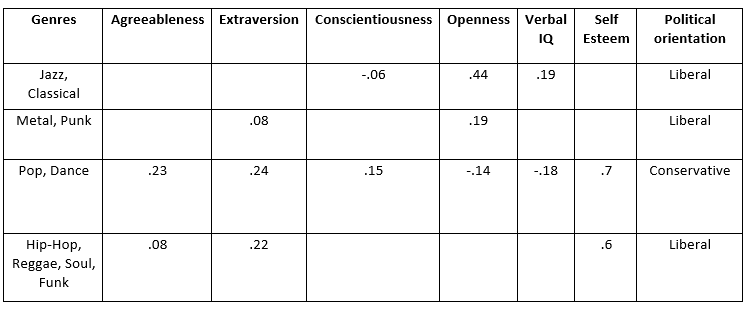By John Clarvis, Data & Insight Director as originally featured in WARC
Understanding what music preferences can tell us about consumers’ personalities – as well as what this means for brands.
During the first year of lockdown, while on one of many pointless walks, I heard someone playing the refrain from “St. Thomas” on a trumpet somewhere down the street. With nothing else to do I followed the sound, using an unconscious rule that if someone is walking around the street playing Sonny Rollins on a trumpet, they are probably someone worth talking to.
It turns out he was, and is now my flute tutor.
Examining this unveiled a chain of assumptions I made about someone before I ever met them. Partially because I am a big fan of Sonny Rollins, but also because I believe that fans of jazz are likely to be open-minded and creative. Surprisingly my assumptions are backed up by evidence. The kind of music people listen to correlates with their personality type.
Rentfrow and Gosling (2003) found four musical dimensions with corollaries to personality, intelligence and political orientation, a study which was bolstered by research by Anderson, Gil, Wolf, Shapiro, Semerci and Greenberg using 17 Million Spotify streams.
The musical dimensions are:
- Reflective and Complex – e.g. jazz, classical
- Intense and Rebellious – e.g. Punk, Metal, Rock
- Upbeat and Conventional – e.g. pop, commercial dance music
- Energetic and Rhythmic – e.g. Hip-Hop, Jungle, Dubstep, Reggae
These dimensions tell us a great deal about the kinds of people who listen to a genre. This then gives us a good impression of what kind of creative and copy will be effective. Furthermore, personality traits can be linked to attention span, media consumption, purchasing behaviour and financial stability as well as other similar tastes in entertainment, such as film, TV and print.

The table above highlights the key personality differences on very broad musical dimensions. Predictably, mass media conforms to a conservative mindset and lower openness to experience than other groups. This correlates with the content of mainstream adverts and messaging.
However, the attributes of other groups are largely ignored by mass media, representing a huge opportunity. Especially when one considers the changing tastes of generations and demographics.
Changing aesthetics
In 2021 in the US, hip-hop and rock outperformed pop by 16% and 4% respectively, yet advertising still mostly reflects the aesthetics of pop. Furthermore, as genres mutate, merge and emerge subsets of personality can be derived; with over 1,200 genres of music there are plenty of unique audiences to go around.
Factors such as verbal IQ and need for cognition also indicate the type of messaging, media and response to repetition that will be most effective. An audience with a preference for novelty will doubtless be turned off by repetitive messaging and generic creative. The opposite is also true in that an audience that values coherency and rules is less likely to respond positively to novelty and the unexpected.
Digital data excels at telling us what people have done, and perhaps what they like or dislike, but it rarely tells us about their personality. A Cambridge University study carried on behalf of Hilton found that adverts tailored to personality type delivered more than double CTR than control adverts.
Personality targeting is typically hard, as the data on individual personality types is impossible to achieve at scale. However, by using proxies such as music taste we can strongly infer personality type from the media in question being consumed. Furthermore, on social networks where individuals declare their tastes (e.g. Facebook, Instagram) we can make and target creative based on personality derived from music taste.
In an age of “sound on” media, the role of music is arguably as important on mobile apps – especially TikTok – as the imagery and copy. Digital agencies spend countless hours optimising the artwork and copy to reach the highest performance but do not do this on the soundtrack. It is not an overstretch to assume that fans of a genre of music would be more likely to pay attention to an advert if it was playing music they loved. Alternatively, if the music does not speak to their personality, they will be far more likely to skip as soon as possible.
As cookies start their long slow walk to obsolescence, the need for a replacement becomes ever more important to marketers. While I think that cookies are creepy, intrusive and bring nothing to the table for actionable insights, they have been the foundation of digital marketing for as long as I can remember.
In their absence marketers should drive the approach to targeting, and with preferences in music, film and TV providing direct links to personality that could prove the most effective way of communicating with an audience.
With the only logical solution lying in contextual targeting, it is up to us to define the contexts, and music and personality have the evidence behind them to be a strong contender.
